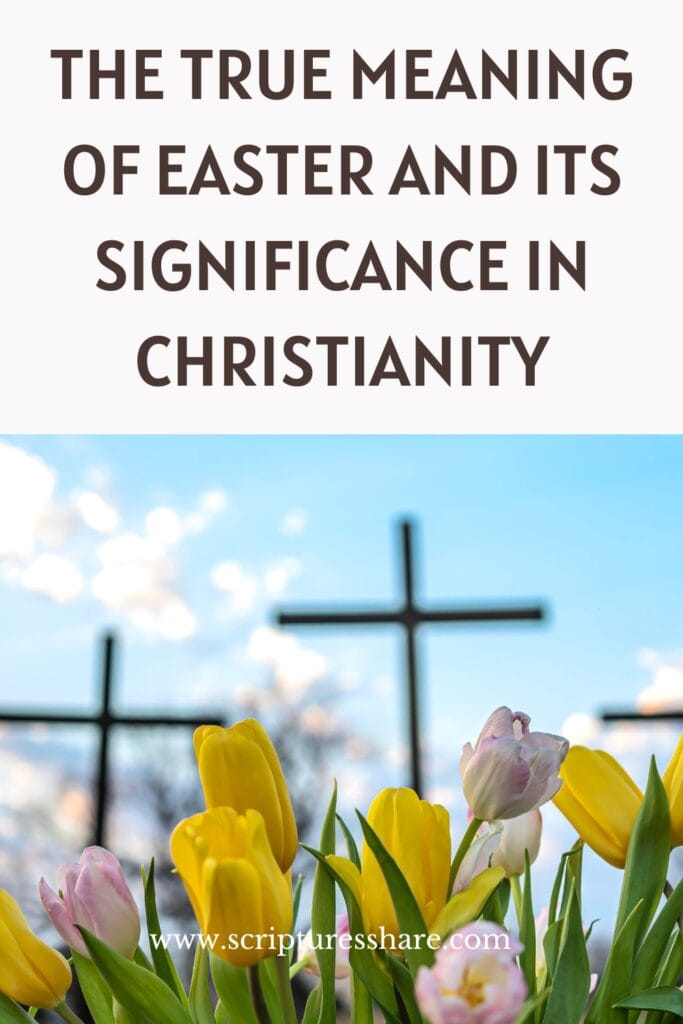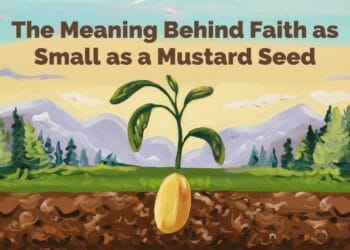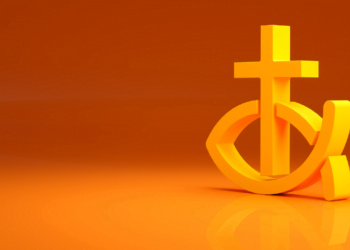No products in the cart.
The True Meaning of Easter and its Significance in Christianity
ADVERTISEMENT
This post contains paid and/or affiliate links. I make a small commission at no extra cost to you. Please see our Privacy Policy.
Easter is a major holiday in Christianity, celebrating Jesus Christ’s resurrection. It’s a time of joy and hope for Christians worldwide. It shows Jesus’ victory over sin and death, giving believers eternal life.
The Easter story is central to the Christian faith. Jesus was crucified on Good Friday and rose again on Easter Sunday. This event shows God’s plan for salvation and the belief in life after death.
ADVERTISEMENT
Easter is a time for Christians to reflect and renew their faith. It reminds them of Jesus’ sacrifice for humanity’s salvation. The story of Jesus’ resurrection inspires Christians to live with faith, compassion, and service.
Many traditions mark Easter, like church services and Easter egg hunts. These activities strengthen community and gratitude for life and faith. They show the importance of coming together and celebrating.
The true meaning of Easter goes beyond celebrations. It’s about believing in Jesus’ resurrection and its impact on believers.
It’s a time to celebrate light over darkness, hope over despair, and life over death. It renews Christians’ faith and commitment to follow Jesus’ teachings.
1 Corinthians 15:3-4 (NIV)
“For what I received I passed on to you as of first importance: that Christ died for our sins according to the Scriptures, that he was buried, that he was raised on the third day according to the Scriptures.”
Historical origins of Easter celebrations
Easter is the oldest and most important festival in the Christian Church. It celebrates Jesus Christ’s resurrection. The origins of Easter come from ancient pagan traditions, like the festival of Eostre, a fertility goddess.
In the early days of Christianity, Easter was celebrated at different times. The First Council of Nicaea in 325 AD set a universal date for Easter. It was decided to be the first Sunday after the full moon following the vernal equinox.
ADVERTISEMENT
The name “Easter” comes from the Old English word “Ēastre” or “Ēostre,” a pagan spring goddess. As Christianity spread, the name “Easter” became linked with the Christian celebration of the resurrection.
The Anglo-Saxons introduced the Easter bunny and Easter eggs in the 8th century. These symbols represent new life and the tomb from which Jesus emerged. Today, Easter egg hunts are a popular tradition.
The history of Easter shows how ancient pagan rituals merged with Christian beliefs. This blend has created a rich tapestry of traditions cherished by millions worldwide.
Romans 6:8-9 (NIV)
“Now if we died with Christ, we believe that we will also live with him. For we know that since Christ was raised from the dead, he cannot die again; death no longer has mastery over him.”
The Symbolism of Easter Eggs and the Easter Bunny
Easter eggs and the Easter bunny are symbols of Easter that are hard to ignore. Their origins and meanings are not always well-known.
Symbolism of Easter Eggs: Easter eggs have a long history, dating back to ancient civilizations like the Egyptians and Persians.
They exchanged eggs as symbols of fertility and new life. Early Christians adopted the egg as a symbol of Jesus’ resurrection. Today, decorated Easter eggs symbolize rebirth and new beginnings.
The Easter bunny comes from German folklore. It was believed that an egg-laying hare judged children’s behavior at Easter’s start. This tradition came to America, where the Easter bunny is now a symbol of fun and abundance.
Advertisement. Scroll to continue reading.
Easter eggs and the Easter bunny create a festive atmosphere. Eggs symbolize hope and new life. The bunny represents Easter’s spirit with spring, rebirth, and abundance.
Understanding Easter eggs and the Easter bunny adds depth to Easter celebrations. These symbols remind us of renewal, fertility, and the triumph of life over death. They are at the heart of this significant Christian holiday.
ADVERTISEMENT
Differences Between Easter and other Religious Holidays
Easter is a significant religious holiday for Christians worldwide. It commemorates Jesus Christ’s resurrection from the dead, as told in the New Testament. The true meaning of Easter is hope, renewal, and rebirth.
Christians believe Jesus’s crucifixion and resurrection offer salvation and eternal life. Easter dates back to early Christianity and is the most important festival of the Christian Church.
It is celebrated on the first Sunday after the full moon after the vernal equinox, between March 22 and April 25.
The origins of Easter traditions come from pagan celebrations like Eostre’s festival. This festival symbolized new life and the rebirth of nature.

The Easter egg represents new life and fertility. Decorating eggs dates back to ancient times, symbolizing spring’s arrival. The Easter bunny brings Easter eggs to children, symbolizing new life and hope.
Easter is unique because it focuses on Jesus Christ’s resurrection. While Christmas celebrates Jesus’s birth, Easter commemorates his death and resurrection. This highlights the core beliefs of the Christian faith.
Modern-day Easter traditions vary across cultures and regions. In the United States, Easter is associated with the Easter bunny, egg hunts, and family gatherings.
In Spain and Italy, Easter processions and religious observances are significant. Despite differences, the belief in Jesus Christ’s resurrection unites Easter celebrations worldwide.
The commercialization of Easter has increased consumerism over religious observances. While Easter is now linked with chocolate eggs, gifts, and decorations, its true meaning is important.
It’s vital to remember Easter’s religious significance and its message of redemption and new beginnings.
John 11:25-26 (NIV)
“Jesus said to her, ‘I am the resurrection and the life. The one who believes in me will live, even though they die; and whoever lives by believing in me will never die. Do you believe this?'”
Modern-day Easter Traditions and Customs Around The World
Easter is celebrated worldwide with various traditions and customs. In the United States, Easter is marked by colorful Easter egg hunts and special meals. Families enjoy glazed ham, deviled eggs, and hot cross buns together.
In the United Kingdom, Easter traditions include rolling decorated eggs down hills and baking Simnel cake. Simnel cake represents the apostles and Jesus with marzipan balls.
In Australia, Easter falls in autumn. This has made the Easter Bilby a popular choice over the traditional Easter bunny.
This is due to concerns about the bunny’s environmental impact. Australians also enjoy festivals and parades during Easter weekend. These celebrations include music, dancing, and community gatherings.
In Sweden, children dress up as Easter witches. They wear colorful headscarves and have red cheeks. They go door to door exchanging drawings for sweets. This tradition mixes Easter with the Swedish holiday of Maundy Thursday.
Easter is a big religious holiday in Greece. It’s marked by solemn ceremonies and processions. The grand Easter Sunday feast is a highlight, featuring traditional dishes like lamb souvlaki and spanakopita.
Easter is a time of reflection and joy worldwide. From Latin America’s vibrant celebrations to Italy’s church services, Easter customs are diverse. They remind us of the unity in honoring this sacred holiday.
Easter festivities and cultural variations in different countries
Easter is celebrated all over the world, but each country has its own way. They mix old traditions with new ones. Let’s look at the different Easter festivities and cultural variations.
Advertisement. Scroll to continue reading.
In Greece, Easter is called “Pascha.” It’s deeply rooted in Orthodox Christian customs. The “Anastasi” ceremony is a highlight, celebrated at midnight with fireworks and candlelight processions. Greeks also share “tsoureki,” a sweet bread with red-dyed eggs.
Spain’s Semana Santa is a time of deep religious reflection. Cities like Seville and Malaga have elaborate processions. These feature ornate floats and people in traditional robes, creating a solemn and respectful atmosphere.
In the United States, Easter traditions mix religious and secular customs. Church services and Easter egg hunts are common.
The White House Easter Egg Roll is also a big event, dating back to 1878.
In Ukraine, Easter is called “Velykden.” It’s a time of vibrant celebrations and old traditions. Decorating pysanky, intricately designed Easter eggs, is a key custom. These eggs are exchanged as gifts, symbolizing rebirth and the life cycle.
Australia’s Easter is relaxed and laid-back, coinciding with autumn. Families enjoy barbecues and outdoor activities. The Easter Bilby, a native marsupial, is also a symbol of the holiday, promoting conservation.
These examples show the diversity of Easter festivities worldwide. While customs vary, the message of hope and renewal is common. It brings people together during this joyous season.
Matthew 28:5-6 (NIV)
“The angel said to the women, ‘Do not be afraid, for I know that you are looking for Jesus, who was crucified. He is not here; he has risen, just as he said. Come and see the place where he lay.'”
The Commercialization of Easter and Its Impact on Traditional Observances
Easter, a holiday deeply rooted in Christianity, has changed over time. It’s now more about shopping than spiritual reflection. This shift is due to the growing influence of commercial interests.
The holiday’s focus has moved from its religious roots to commercial aspects. This change is evident in the sale of Easter-themed items.
Today, Easter is all about buying things like decorations and chocolates. This shift has made the holiday more about spending money than spiritual growth. While it boosts the economy, it also dilutes the holiday’s original meaning.
The Easter bunny and Easter eggs have become symbols of commercialism. They were once tied to religious traditions but now are seen as just festive symbols. This shift can make it hard for people to remember the holiday’s true significance.
Modern Easter celebrations have also changed. Instead of going to church, many now focus on activities like egg hunts and big meals.
These changes might attract more people but can also lessen the holiday’s spiritual importance.
Despite this, many people and churches try to keep Easter’s religious essence alive. They offer special services and programs to help believers connect with the holiday’s spiritual side. This effort ensures Easter’s true meaning is not lost in the commercial frenzy.
It’s important to remember Easter’s true significance amidst all the commercialization. Finding a balance between enjoying the holiday and honoring its religious roots is key.
This way, Easter can remain a meaningful and spiritually enriching celebration for all.
Key Takeaway:
Easter is a celebration of hope, rebirth, and renewal. It commemorates Jesus Christ’s resurrection, symbolizing victory over sin and death. The holiday’s essence is about redemption and eternal life through Christ’s sacrifice.
The origins of Easter come from ancient spring festivals and fertility celebrations. Over time, these merged with Christian beliefs, creating the modern Easter holiday. Symbols like Easter eggs and the bunny represent new life and the resurrection, evolving from pagan to Christian traditions.
Easter is unique because it focuses on faith and salvation. Unlike Christmas, which celebrates Jesus’ birth, Easter highlights his resurrection, making It a central event in Christian theology.
Today, Easter traditions vary worldwide, with each culture adding its own twist. From egg hunts to parades, the holiday is celebrated in many ways. This diversity enriches the holiday, showing how different cultures observe Easter.
Yet, Easter has also become commercialized, focusing on consumerism. This shift has led to a proliferation of Easter-themed products. It raises questions about the holiday’s sacred meaning and spiritual intent.
Easter’s true essence is rooted in its Christian celebration of resurrection and redemption. While traditions and origins add depth, it’s vital to remember the holiday’s spiritual significance. This sets Easter apart in the realm of religious observances.
Conclusion
Easter is a holiday filled with history and tradition. It’s celebrated by Christians all over the world. It marks the resurrection of Jesus Christ, a time of renewal and hope.
Easter reminds us of the Christian faith’s core beliefs. It’s about forgiveness, redemption, and eternal life.
The origins of Easter go back to ancient festivals celebrating spring. These festivals merged with Christian beliefs, creating the Easter we know today.
Easter is now a time for Christians to honor Jesus’ crucifixion and resurrection.
Advertisement. Scroll to continue reading.
Easter eggs and the Easter bunny add fun to the holiday. Eggs symbolize new life and rebirth. The Easter bunny represents fertility and abundance.
Decorating eggs and celebrating the Easter bunny are long-standing traditions. They bring joy to both children and adults.
Easter is unique because it focuses on Jesus’ resurrection. It’s different from Christmas, which celebrates Jesus’ birth. These differences make Easter special in the Christian calendar.
Today, Easter traditions vary worldwide. Each country adds its own twist, from parades to egg hunts. This diversity makes Easter a global celebration.
Easter is celebrated in many ways globally. In Greece, people crack red eggs to symbolize Christ’s tomb. In the U.S., the White House Easter Egg Roll is a beloved tradition.
Easter has become more commercial over time. Retailers sell everything from chocolate bunnies to gift baskets. This commercialization can distract from the holiday’s spiritual meaning.
Yet, these commercial aspects also add to the holiday’s charm. They make Easter festive and fun.
Easter is a time for Christians to reflect, renew, and rejoice. It’s a holiday filled with history, tradition, and cultural diversity.
From church services to festivities, Easter brings people together in faith, love, and hope.
ADVERTISEMENT












